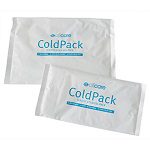Cool Down
Why Cool Down Is Important After Exercise
While often neglected a cool-down serves four primary purposes:
- Immediate cardiovascular recovery.
- You are normalising muscle length and tension.
- Mental recovery
- Preparation for your next exercise session.
Let’s review these four purposes in a little more detail.
Cardiovascular Recovery
Immediate cardiovascular recovery is potentially life-saving. Your heart has been busily pumping blood at high pressure through your body. If you stop your blood suddenly can pool in the engorged muscles, typically your legs, and you may feel dizzy or collapse. Cool-Down acts as a steady “normaliser” that can also help to aid the dissipation of muscle contraction waste products such as lactic acid, and assist the normalising of “fight and flight” chemicals such as adrenaline in your blood. Only slowing down the vigour of the exercise you have just done for a few minutes is all it takes to normalise your circulatory system. Runners can walk. Swimmers can swim slower. All this happens as your heart rate, and blood pressure safely resumes your normal resting levels.
Resting Muscle Length
Normalising muscle length and tension. One of the byproducts of exercise is muscle bunching. Think of a bodybuilder post biceps curls. Semi-bent elbows become the immediate post-exercise elbow posture, and if this remains long term, they will have shorter and more bunched muscles in the long-term. During sports, this may be beneficial, but between your training sessions, it leads to hypertonic muscles, increased risk of muscle strain and in long-term cases, a loss of joint range of motion. Any of these factors may affect performance. A runner for example, with a tight hamstring, will have a reduced stride length and have a higher risk of injury. A tight muscle is usually a less efficient muscle, meaning less force generation and power.
What are the Stretches Recommended Post-Exercise?
The purpose of post-exercise stretching is to restore muscle length, so static stretching is the key. Research has shown that 30 second slow static stretches are the way to go (Ayala et al. 2010). Most researchers favour two to three repetitions. But, you should listen to your body, and if you feel an extra stretch or two of a tighter than regular muscle group is what you need, I’d suggest you give it a try. Your body rarely lies and has a pretty good idea what it likes. It is also important to stretch all the muscles that were involved in your activity.
What about Massage and Foam Rollers?
You can probably also guess that a light non-traumatic style massage or use of a foam roller may also be beneficial at restoring your post-exercise muscle length.
Mental Recovery
Mental recovery is an often overlooked part of the recovery process. We lead busy lives, and it is often challenging to ensure that we adequately take the time to relax and let our mind calms down. Relaxation techniques can be a useful tool. To help you with this, even taking a few minutes to cool down, some mindful relaxation such as meditation, or having a relaxing soft tissue massage can help you reflect upon your training performance. It also helps your or to recover for your next session mentally.
Re-Preparation
Preparation for your next exercise session. Sometimes cool-down is truly an ice-cold bath. That’s why ice baths are used by professional athletes post-event or post-game. Research has identified the benefits of ice baths to assist post-exercise bruising and bleeding, joint or muscle inflammation and to provide pain relief – even if it is a bit chilly when you first hop it. Of course, the less brave can use ice packs to painful bits. It all aims to stop things swelling too much, which aids your recovery time.
Things to Avoid in Cool Down.
Just as there are a lot of good things to do in a cool down, it’s also good to avoid other factors.
- Avoid heat – you’re already hot, and further heat will only encourage bleeding.
- Avoid alcohol – I don’t want to be a party-pooper, but alcohol encourages inflammation and dehydration.
As I mentioned earlier, the benefits of an active cool-down help you to recover from your session and prepare for the next. Now it’s up to you!
More info
What Causes Post-Exercise Muscle Soreness?




































































